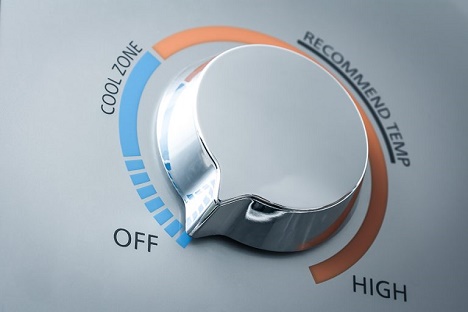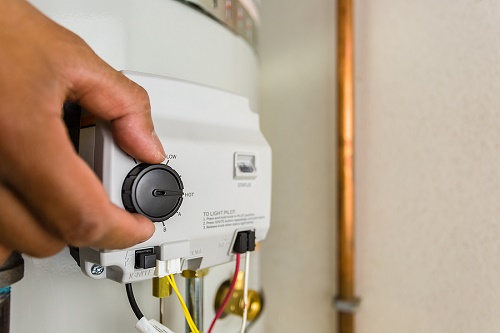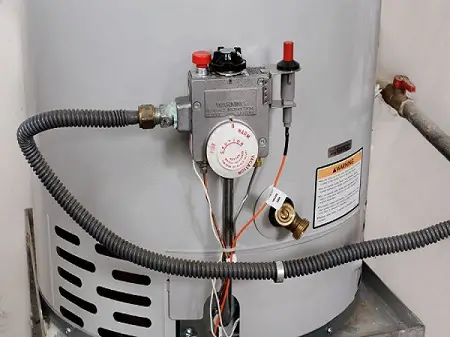Tankless water heater temperature fluctuations
A tankless water heater is a type of heating system that uses electricity to heat water. This means it doesn’t have a storage tank, so there’s no need to keep the hot water warm after you turn off your shower or dishwasher. Instead, the tankless unit will deliver hot water as soon as you need it–no waiting around. But Is it normal to experience tankless water heater temperature fluctuations?
The best way to understand why this happens is by looking at how these systems work. When they’re first turned on each morning before breakfast at home. They heat up their internal components until they reach their target temperature range and then stay there until it’s time again later in the day. When more energy needs are used again after those same appliances kick on again too late into evening hours where temperatures tend not to change so much anymore because there aren’t any human bodies present inside anymore either.
Tankless water heaters are made to keep water hot so that it doesn’t need to be reheated
- The tankless water heater uses a cold water supply.
- It needs to maintain hot water.
- It has a thermostat to control the temperature of the stored hot water, so it can be set to keep your household at just the right temperature if needed.
- There is also a drain valve that allows you to empty out your tank when it’s full or when you’re done using it
There are two main types of tankless water heaters: instantaneous and storage. An instantaneous heater is one that heats the water right when it’s needed, so no pre-heating or storing is necessary. You’ll find this type of heater in hotels and large buildings where hot water is constantly being used.
A storage heater, on the other hand, stores hot water in a tank and heats it up when needed. You can find this type of heater in most homes and smaller buildings where there isn’t constant use of hot water.
This means they use more energy but they also deliver hot water faster than a tanked model
- Tankless heaters use more energy than tanked models, but they also deliver hot water faster. They are more efficient and environmentally friendly.
- They are also more portable, which makes them perfect for camping and other outdoor activities.
- Electric heaters are more expensive, but they have many benefits. They are safer to use and easier to install than tankless models.
- It is more reliable and requires less maintenance. They also use less energy than tankless models, making them a better choice for people who are concerned about the environment.
A tankless heater can fluctuate up or down on the thermostat setting between 10-20 degrees Fahrenheit
A tankless heater can fluctuate up or down on the thermostat setting between 10-20 degrees Fahrenheit. This is normal, and it’s not a problem in the summer when you want your water to be hotter than 80 degrees F. However, if you notice that your temperature is going down while you are running hot water from your faucet or showerhead, this could be due to fluctuations in temperature from time to time.
The reason for this is that there aren’t any pipes connecting your pipes directly with each other–the heat transfers through convection (heat moving from one place to another) and conduction (heat transferred by touching).
When using an electric tankless heater instead of gas or oil heaters which require insulation between them and their surroundings there’s no insulation so sometimes air currents can cause differences in temperatures within those systems which will cause them not only fluctuate but also sometimes even go out completely instead of just staying where they should be.
Black And Decker Tankless Water Heater
Some people find their water is too cold when they shower with a tankless model, especially during the winter
If you are thinking about installing a tankless water heater, but have concerns about how it will perform during the winter months or in the summer heat, it’s important to note that tankless models are not designed for continuous use.
Some people find their water is too cold when they shower with a tankless model, especially during the winter. This can be caused by several factors:
- The temperature of your home’s hot water source may be lower than what your tanked system uses; therefore, if you’re using an outdoor spigot as part of your system (which runs from your house into an outdoor spigot), then this could explain why some people get cold showers while others don’t but again..this is something that happens more often when there isn’t enough pressure coming out of both sides of the tap (i.e. if one side has too much pressure on it).
Tankless Water Heater Temperature Fluctuations
The heaters tend to get very hot in the summer and very, very cold in the winter, so the temperature fluctuations are normal, though inconvenient
Tankless water heaters are designed to keep water hot, so you don’t have to reheat it. This means that the temperature of your tankless unit will fluctuate more than a traditional tanked model. If you live in an area where temperatures can range from 20-50 degrees Fahrenheit in winter and 100+ degrees F in summer (and this is not uncommon), then this may not be much of a problem for you.
However, if your house is on the colder side or if there are other factors at play–like poor insulation or drafty windows–then additional fluctuations could cause issues with hot water service during these seasons.
In fact, some people report seeing their tanks freeze up during winter months due to low outdoor temperatures combined with high demands for showers and dishes washing at once.
If you live in an area where temperatures can range from 20-50 degrees Fahrenheit in winter and 100+ degrees F in summer (and this is not uncommon), then this may not be much of a problem for you.
However, if your house is on the colder side or if there are other factors at play-like poor insulation or drafty windows–then additional fluctuations could cause issues with hot water service during these seasons.
In fact, some people report seeing their tanks freeze up during winter months due to low outdoor temperatures combined with high demands for showers and dishes washing at once!
Why Is My Tankless Water Heater Running Hot and Cold
You’ve got a tankless water heater, and it’s running hot and cold. What do you do? If you’re like most people, you start looking online for answers. But before you do that, here are some things to keep in mind:
The water heater is running hot and cold
The water heater is running hot and cold. The thermostat is not working properly, and you can’t adjust the temperature setting.
If your tankless water heater doesn’t heat up to the right temperature for your home or business, it could be due to any of these reasons:
- The thermostat is not setting the correct temperature for your particular model of the tankless water heater (this may cause problems if you have multiple units in an area). If this happens, contact us so we can help! We’ll also give tips on how to fix this problem yourself if necessary.
The temperature setting is wrong

The temperature setting is the temperature at which your thermostat shuts off the flow of gas or electricity. It should be set to around 120 degrees Fahrenheit if you want it to run properly. If your water heater is running hot and cold, this could be the reason why!
There’s a problem with the thermostat

The thermostat is a device that regulates the temperature in your tankless water heater. It’s often the cause of problems because it isn’t adjusted properly, calibrated, or installed correctly.
If you have a problem with your thermostat, there are several things you can do:
- Check for leaks around the unit and make sure none are present before turning it on again. Leaks might cause high temperatures in both hot and cold settings, so check them all!
- Try adjusting your thermostat set higher than normal. If this doesn’t work then try lowering it back down again. until it does work properly and then raise it once more until everything starts working properly again!
The pilot light is out
If you’re experiencing this issue, it’s likely that your pilot light is out. A pilot light is a small flame that burns constantly inside your water heater to keep it lit and ready to use. If this flame goes out or stops burning, then your entire water heater will shut off until it burns again.
To check for this problem:
- Turn on the main switch in your house (or elsewhere in your home if using an electric fireplace) which should turn on all of the lights in that room or area. This will help determine if there are any current issues with power being provided by other parts of the circuit before continuing down this path further into the troubleshooting steps below!
You have a leaky tankless water heater
If your tankless water heater is leaking, you need to fix it. Here’s how:
How to fix a leaking tankless water heater
- Check for leaks by turning the faucet on and off a few times. If there are any leaks, they should stop when the cold water stops running and start again when hot water comes out. This can be tricky if you have more than one faucet or if your taps aren’t exactly centered with each other–but don’t worry! Your local plumber will be able to help you identify what’s wrong with your system and get it fixed.
- To find out exactly where a leak might be coming from, take apart some of the pieces of your new tankless system (if necessary) so that only certain parts remain inside your house while others go into storage until further notice; then attach them all back together again without any extra fittings or screws–just remember where everything goes during assembly so that no part gets lost during disassembly next time around!
If your tankless water heater runs hot and cold, there are a few possible reasons why it might be doing so and how to fix it
- The thermostat is faulty. If your tankless water heater is running hot and cold, there are a few possible reasons why it might be doing so and how to fix it.
- The valve is faulty. If you have an older model of a tankless water heater that has not been maintained properly over time, then there may be some issues with the valves themselves that cause this problem. For example, if you have an old model of a tankless unit with an electronic ignition system but no pilot light on top of the unit itself (which would usually be located at its base), then this could lead to issues such as improper operation due to lost power or being too hot inside when trying to start up after prolonged periods without electricity being present throughout daily life activities
Is your tankless water heater running hot and cold?
If your tankless water heater is running hot and cold, there are a number of possible reasons why it might be doing so. The thermostat measures the temperature of the water that enters the tankless heater and turns it on or off accordingly. If it’s not functioning properly, then what can you do?
The first thing to check is if there is any clogging in the system. If this happens, then open up your hot water faucet (or shutoff valve) and flush out whatever has built up inside it with some clean tap water; this will help clear out any gunk that may have collected over time by accidentally leaving dishes soaking overnight or something similar like that.
After flushing out all remaining debris from inside your faucet assembly itself, try turning on both taps again after about twenty minutes–this should allow for better flow through both elements without having any major issues arising from clogs causing damage elsewhere within its design structure.”
If you’re experiencing problems with your tankless water heater, it’s time to investigate the problem
If you’re experiencing problems with your tankless water heater, it’s time to investigate the problem.
- Check the thermostat: If you have a programmable thermostat installed in your unit. Make sure it’s turned on and set correctly. A properly functioning thermostat will allow you to turn off the power at night or when not using heat (if applicable).
- Check any circuit breakers that may be located in close proximity: Make sure this area is clear of any cords or wires before checking any circuits associated with your unit so as not to accidentally trip over anything while working around it during troubleshooting efforts.
- Check for leaks: Leaks are usually caused by something breaking internally within an appliance such as tubing. However, sometimes they can also be caused by external factors like dirty filters or clogged drains. which need fixing before repairing other issues related directly back to the inside components themselves. To check for leaks all over again try turning off everything else connected both inside. Along outside surfaces first, then find out how much pressure each individual piece puts out before pouring water through it again. One last time just in case there was still something wrong after all those tests had been done already.
One of the most common problems is a faulty thermostat
One of the most common problems is a faulty thermostat. The thermostat is a small device that measures the temperature of the water that enters the tankless heater and controls a valve that allows gas or electricity to flow into it in order to heat it up.
If your unit has low pressure, this means there are too few pipes connected to it at present; therefore, you may need more pipes installed on your property, a plumber can do this. If your unit has high pressure, then there are too many pipes connected to it at present; therefore, some may need to be removed from further use.
The thermostat measures the temperature of the water that enters the tankless heater. The thermostat measures the temperature of the water that enters the tankless heater. It’s a valve that controls gas or electricity to flow into the unit in order to heat it up. The thermostat senses this temperature, and if it’s too high or too low for your needs, it opens or closes accordingly.
It controls a valve that allows gas or electricity to flow into the unit in order to heat it up
It controls a valve that allows gas or electricity to flow into the unit in order to heat it up. The thermostat is a small electronic device that senses the temperature of the water, then sends signals to close or open the valve.
When it detects that the water has reached a certain temperature, the valve closes and prevents more gas or electricity from entering the unit
When it detects that the water has reached a certain temperature, the valve closes and prevents more gas or electricity from entering the unit. This can be helpful in helping to prevent damage to your home’s pipes and appliances.
In some cases, however, this process doesn’t work properly and water can enter at too high a temperature or not enough gas or electricity will flow into the unit
In some cases, however, this process doesn’t work properly and water can enter at too high a temperature or not enough gas or electricity will flow into the unit.
If your thermostat is set incorrectly it may cause the tankless heater to run hotter than normal. The thermostat is usually located on the backside of your unit near where you connect it to the water line.
This may cause it to run hot or cold unless you adjust its settings manually at least once per month
If you have a tankless water heater, it’s possible that your unit may be running hot or cold. This can happen if the thermostat is blocked. You can manually adjust the temperature setting on your tankless water heater. And make sure that it’s set to its optimum level for efficiency and performance. If you check this often enough, it should prevent this problem from happening again in the future.
As we have learned, there are many reasons why your tankless water heater may be running hot and cold. The most common problem is a faulty thermostat. If this is the case, you’ll need to adjust its settings manually at least once per month. until your problem goes away completely or until you replace the unit altogether.
Conclusion
The better way of dealing with these tankless water heater temperature fluctuations is by considering the factors that affect the temperature in your home, such as location and weather conditions.

